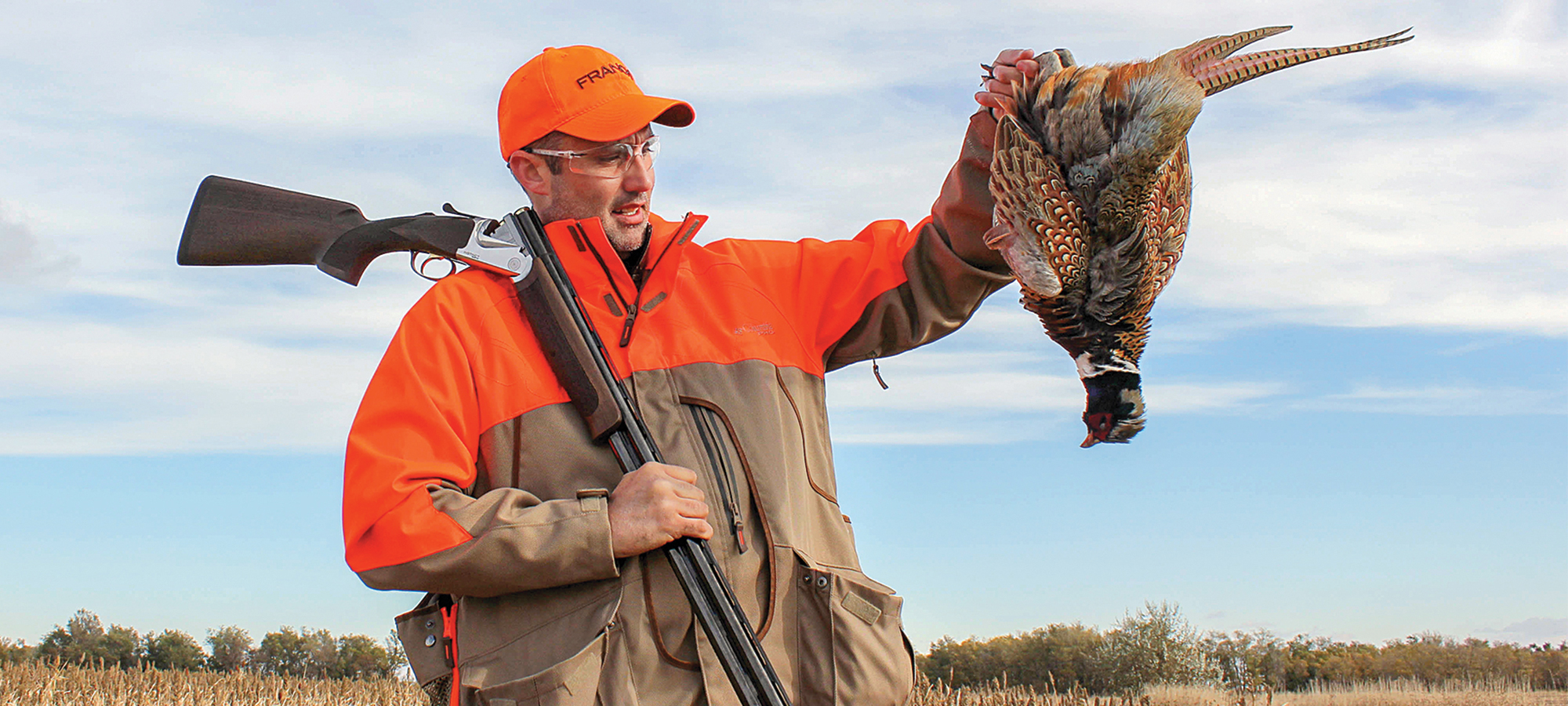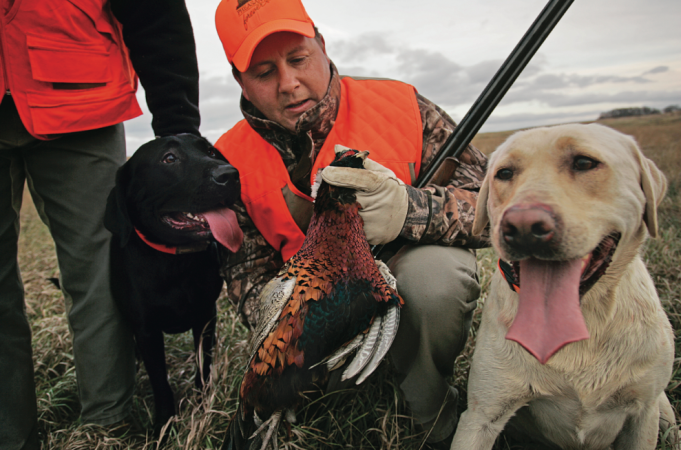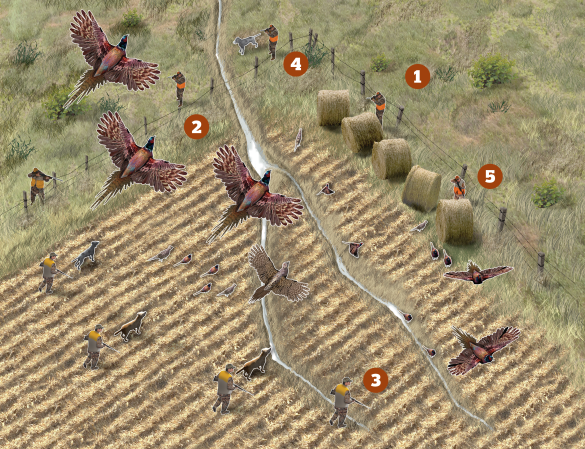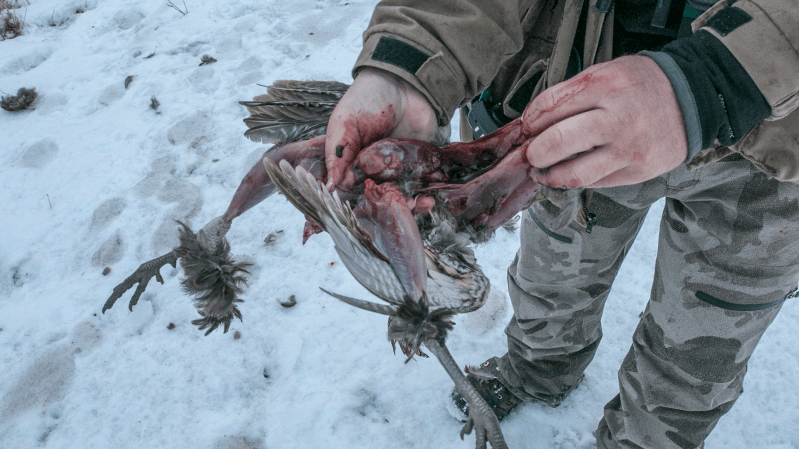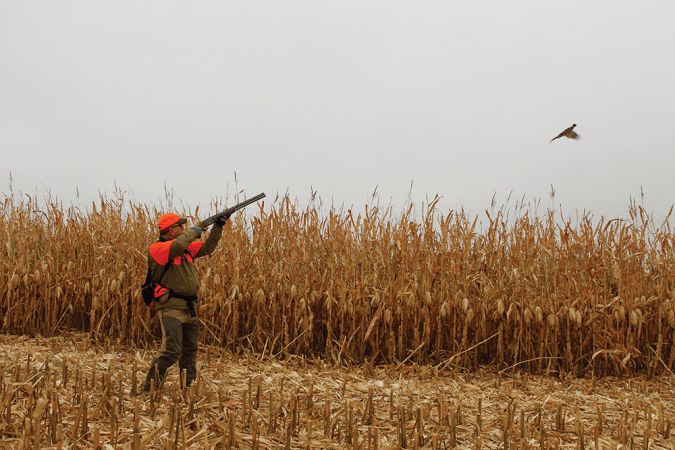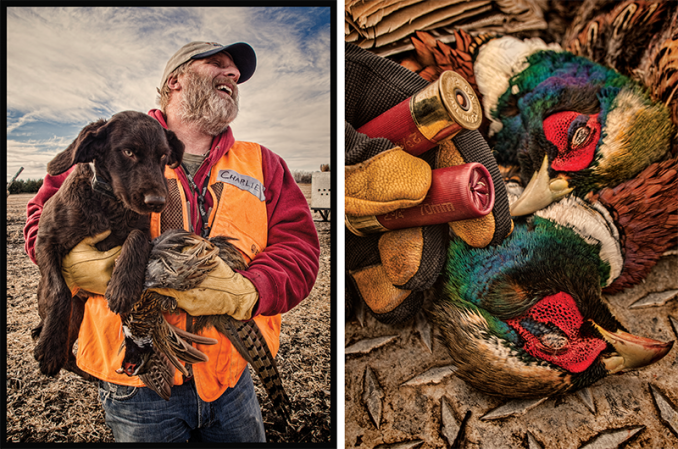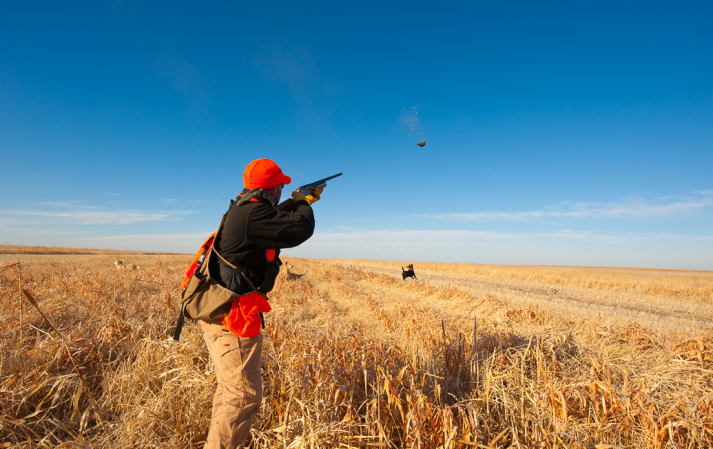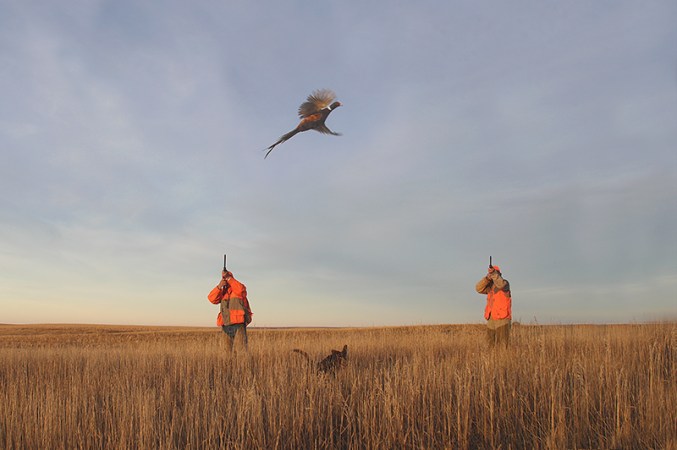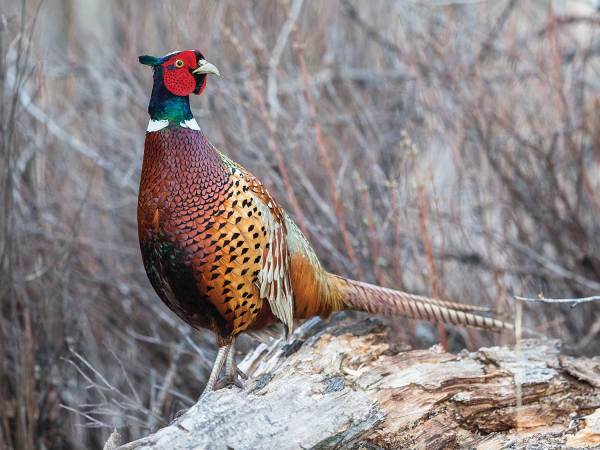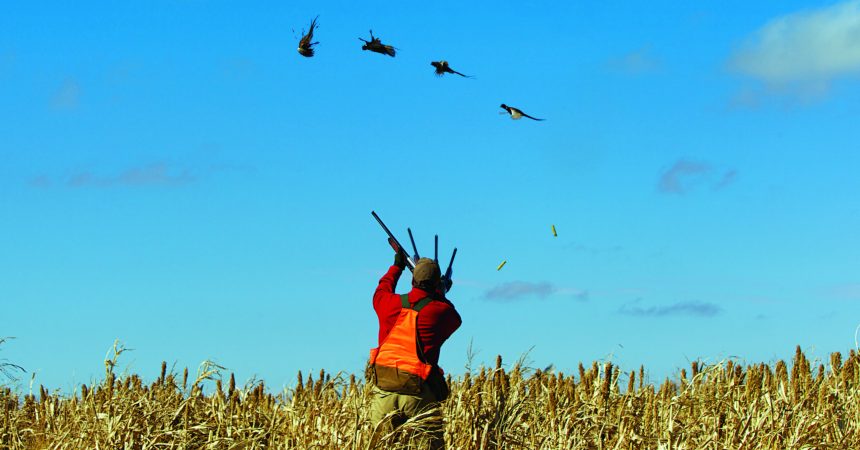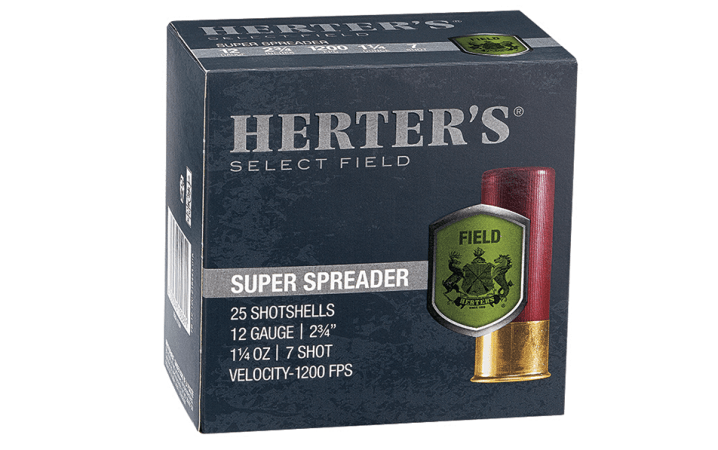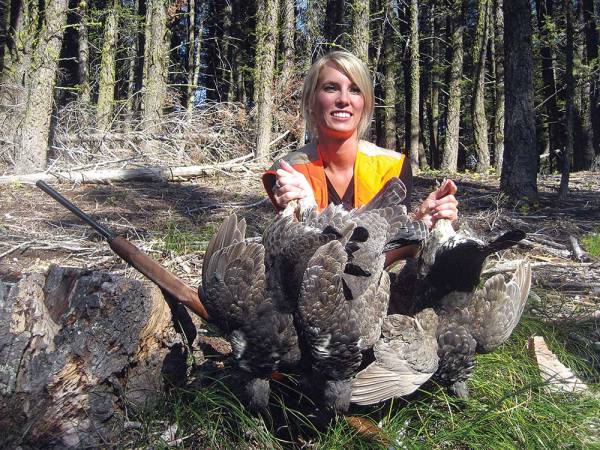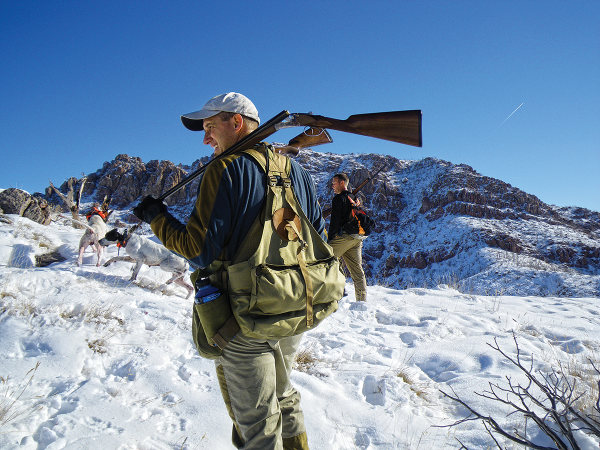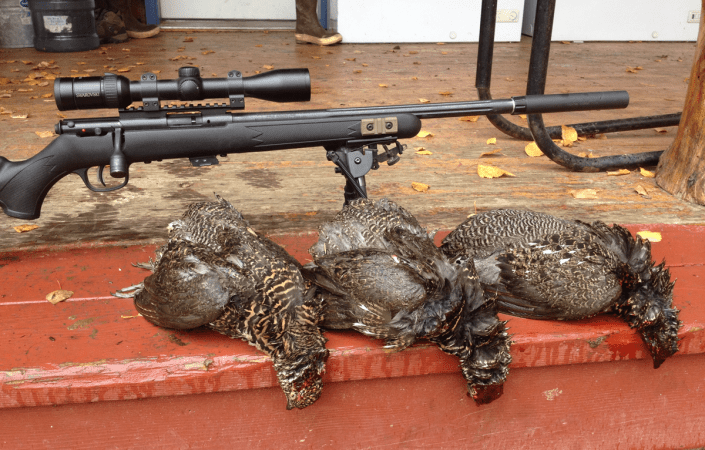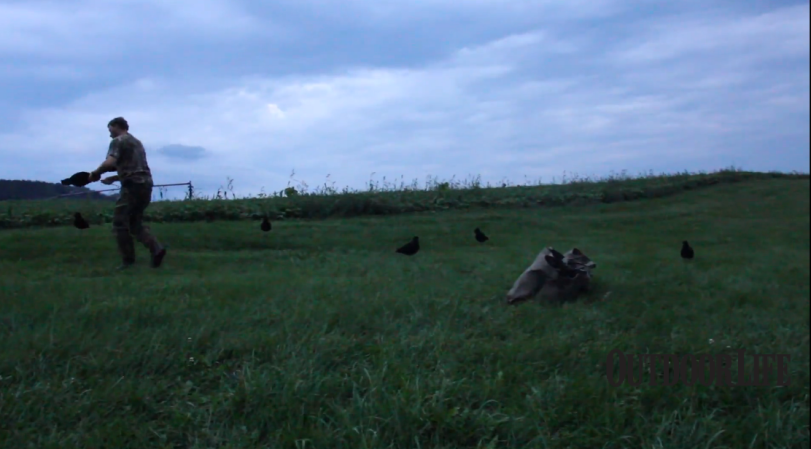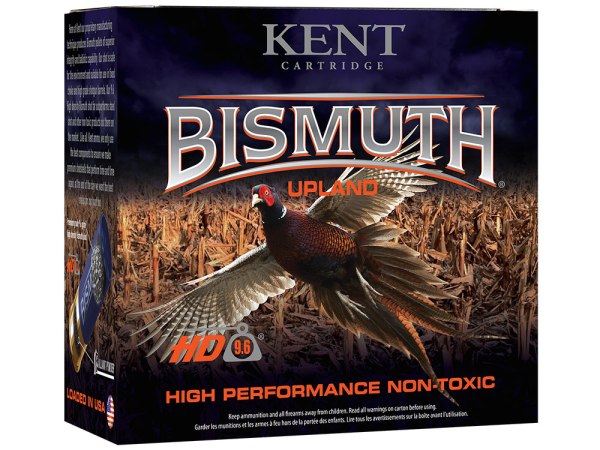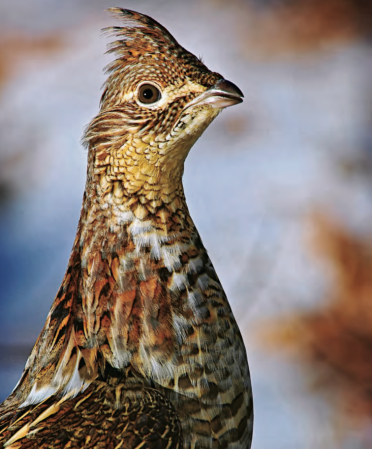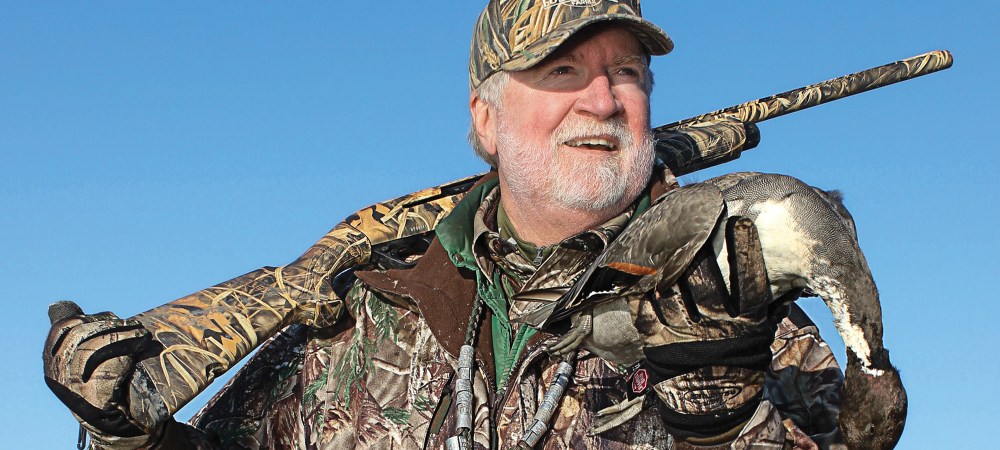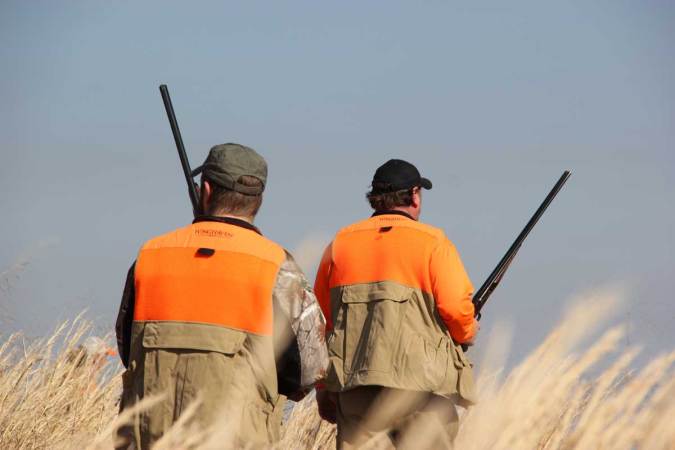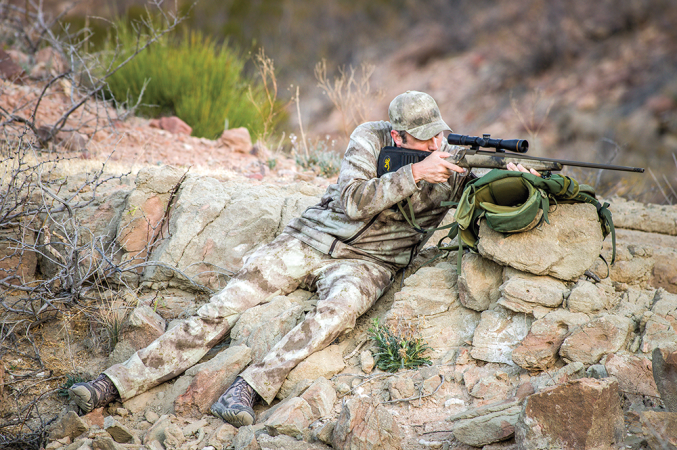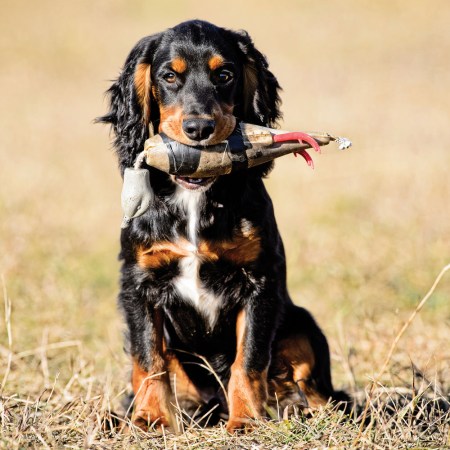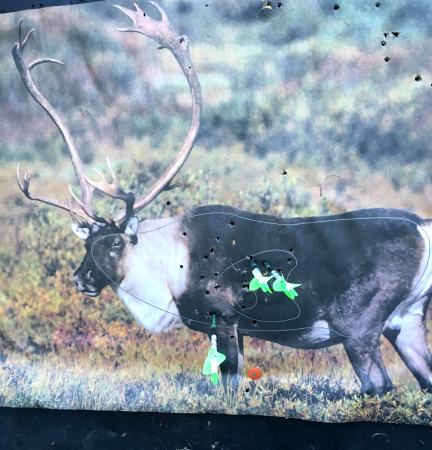The flash of color and cackle of a rising rooster is an unforgettable moment, but hard-flying wild pheasants make a tough target. Focusing on these three key elements of shotgunning can help you put more birds in the bag.
1. CHANGE YOUR AIM POINT Many hunters become so flustered when a bird flushes in front of them that they lose track of their aiming point. The natural inclination for some is to aim for the center of the bird’s body, focusing on the whole target instead of a single strike point. The result is almost always a miss behind or perhaps a few cropped tail feathers for the rooster. The better option—and this takes discipline in the chaos of an unexpected flush—is to focus your attention on the bird’s head. Specifically, look for the eye on crossing or quartering shots. In doing so, you maintain a focal point near the front of the bird and in the same direction as its flight. Improved focus and a consistent point of aim will dramatically increase your odds of killing more pheasants.
2. SLOW DOWN Don’t let the pounding winds and raucous cackle of a rising pheasant cause you to rush your shot. That’s easier said than done, since most shooters feel the need to get on target before the bird is up to beat their hunting buddies to the punch. That perceived sense of urgency often results in terrible shooting. The objective isn’t to shoot slowly, but rather to ensure that your gun mount, swing, and shot delivery are precise and controlled. The best way to improve these skills is on the skeet field. Shoot a few rounds prior to pheasant season from a low gun position, with the muzzle up and the recoil pad close to your hip—the same position you will be in when it flushes. You’ll soon realize that a consistent gun mount and proper body movement are far more effective than throwing the gun to your shoulder and slapping the trigger.
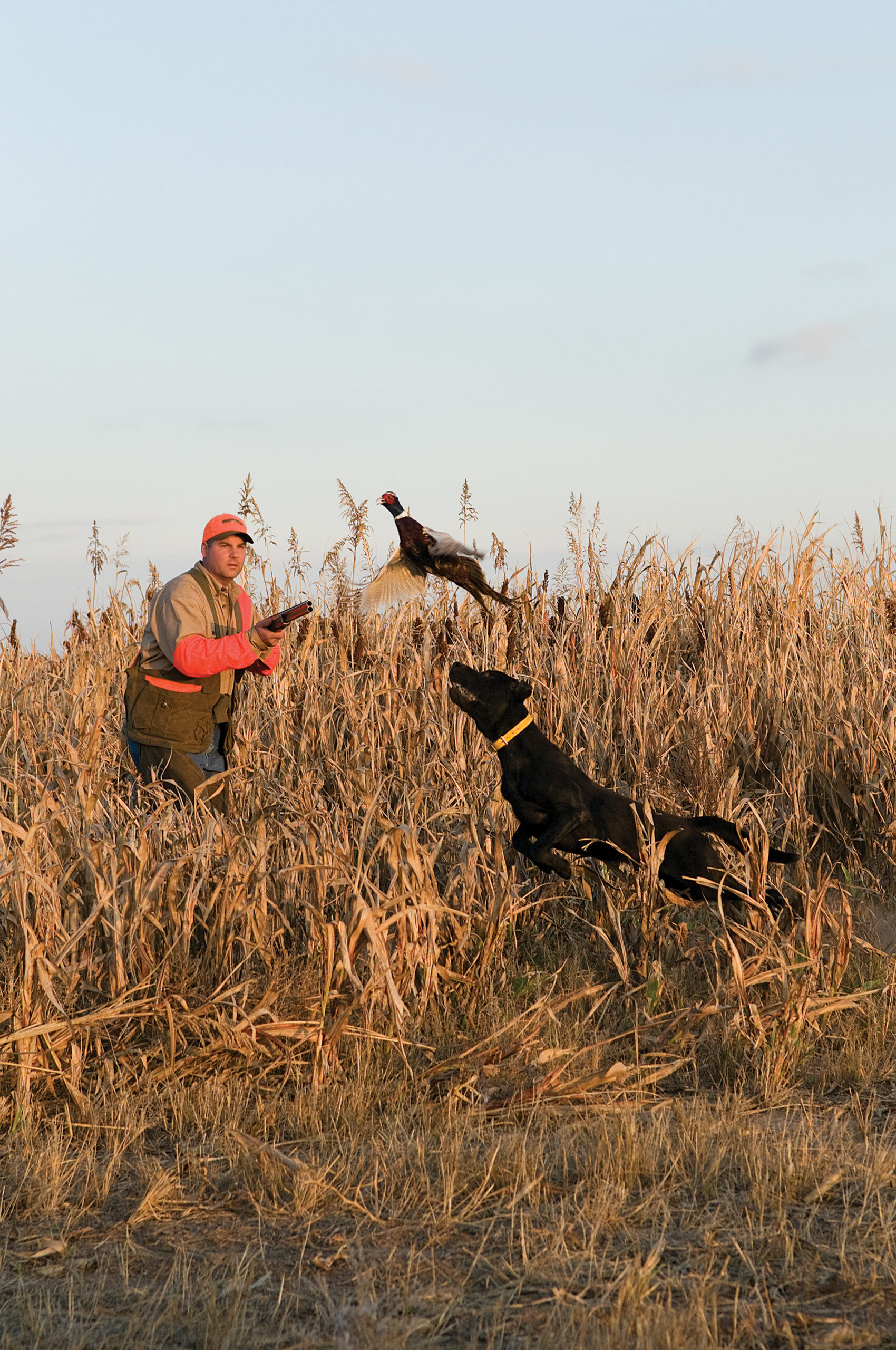
3. FOLLOW THROUGH Most hunters shoot at a flushing pheasant, pause to see if they hit it, then quickly deliver a follow-up if the bird is still in the air. We all have a way of letting instinct take over, but in this case it is not helpful. It results in a broken, choppy start-and-stop swing that leaves the hunter trying desperately to catch up to the bird with each successive shot. Most of the time the bird comes out ahead. Even the best clays shooters are sometimes prone to dropping the muzzle when shooting wild birds. Instead, you want to focus on your swing and continue moving the gun regardless of whether you hit or miss. Most important, maintain that solid cheek weld on the stock and keep the muzzle moving in a steady, smooth forward motion after the bird drops. Work on perfecting your swing with every single shot you take.
